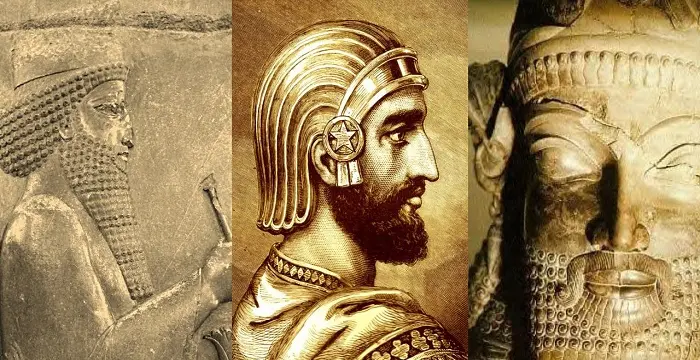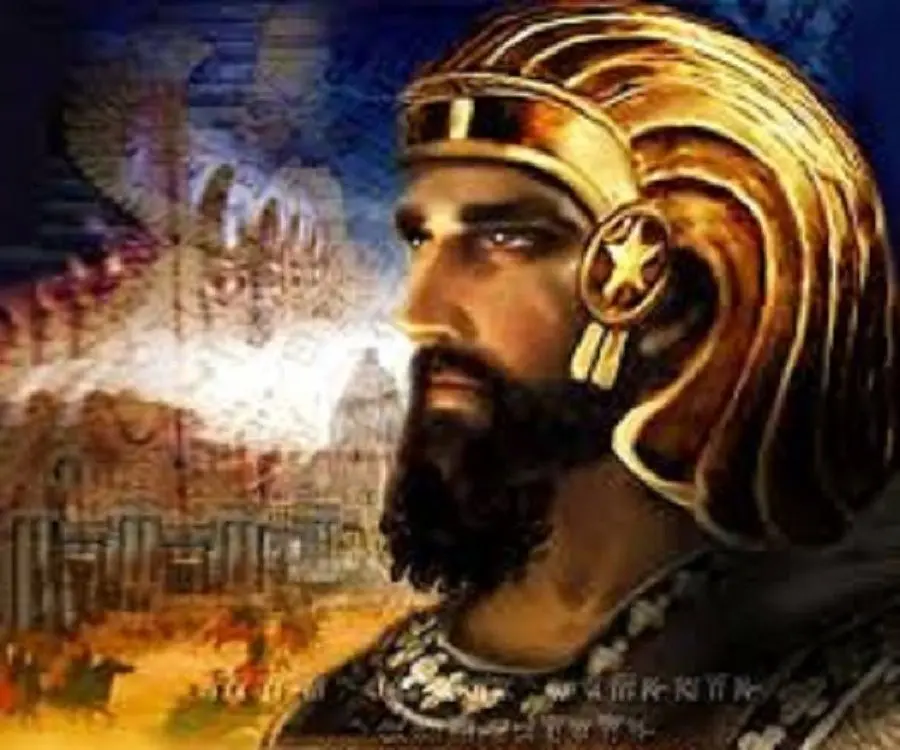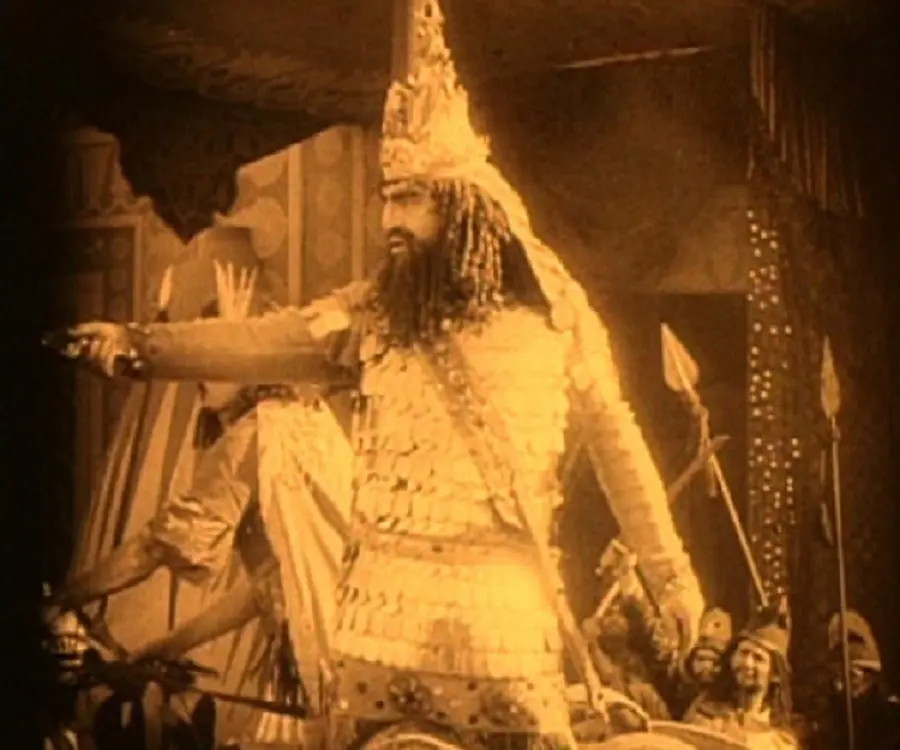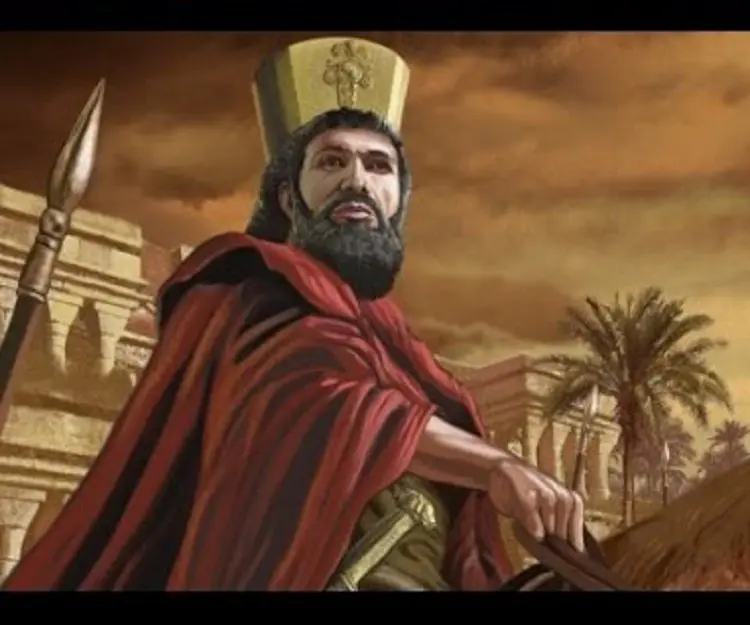
Cyrus the Great - Founder of First Persian Empire, Timeline and Family
Cyrus the Great's Personal Details
Cyrus the Great was a ruler who founded the First Persian Empire
| Information | Detail |
|---|---|
| Birthday | 590 BC |
| Nationality | Iranian |
| Famous | Historical Personalities, Emperors & Kings, Emperors, Founder of First Persian Empire, Kings |
| Spouses | Cassandane, Neithiyti |
| Known as | Cyrus II of Persia, Cyrus the Elder |
| Childrens | Artystone, Atossa, Bardiya, Cambyses II, Roxane |
| Discoveries / Inventions | |
| Birth Place | Anshan |
| Religion | Zoroastrianism |
| Gender | Male |
| Father | Cambyses I |
| Mother | Mandane of Media |
| Born in | Anshan |
| Famous as | Founder of First Persian Empire |
| Died at Age | 60 |
// Famous Emperors
Sundiata Keita
Sundiata Keita was the founder of the Mali Empire in West Africa. This biography profiles his childhood, early life, struggles, founding of empire, rule, administration, achievements and also gives some fun facts.
Ashoka
Ashoka was the third emperor of the Mauryan Dynasty and ruled almost the entire Indian subcontinent. This biography profiles his childhood, life, reign, achievements and timeline
Murad IV
Murad IV was one of the mighty Sultans in the history of the Ottoman Empire. This biography profiles his childhood, family, accession, rule, administration and timeline.
Cyrus the Great's photo
Who is Cyrus the Great?
Cyrus the Great, also referred to as Cyrus II of Persia or Cyrus the Elder, was a ruler who founded the First Persian Empire, also known as the Achaemenid Empire. His empire not only embraced the civilized states of the ancient Near East, but also included large parts of Central and Southwest Asia. Referred to as the “Father of his people” by the ancient Persians, his reign lasted for nearly thirty years. Though he conquered several empires, one unique quality about him was that he showed respect to the religions and cultures of the lands he conquered. This helped in winning the support of the people, and in establishing a proper administration that would work for the benefit of the people. His work, ‘Cyrus Cylinder,’ is the oldest known declaration of human rights. He was also revered for his knowledge of politics as well as military strategy. Respected as an ideal monarch, he has also been referred to as a Messiah by the Hebrew Bible. Cyrus the Great managed to build the world's largest empire of that time. Even after his death, his successors continued to expand the empire. Cyrus is believed to have been killed during a battle with the Massageteans, after which his son Cambyses II succeeded him. Even centuries after his demise, he is still remembered today as one of the greatest leaders in history.
Childhood & Early Life
The exact date and place of Cyrus’s birth is not known. However, he was born somewhere in the Median empire, sometime between 590 and 580 BCE. His father was Cambyses I, the King of Anshan and his mother was Mandane, daughter of Astyages, the last king of the Median Empire.
A mythological account of Cyrus’s early life was presented by Herodotus, according to which, his grandfather Astyages had a prophetic dream, in which he saw flood as well as fruit bearing vines emerging from his daughter’s pelvis. This was interpreted negatively by his advisers who told him that his daughter’s son would be a rebel who would try to replace him to become the new ruler.
As his daughter was pregnant at that time, Astyages, under the influence of his advisors, made the decision to get the baby killed as soon as it was born. The task of killing the baby was given to his chief adviser Harpagus.
Harpagus was reluctant to perform the gruesome task and he gave the job to a shepherd named Mithradates. The shepherd, however, decided to raise Cyrus as his own son, and pass off his own stillborn son as the dead baby Cyrus.
Cyrus grew up in secrecy. However, after he beat up the son of a nobleman during a game, he was summoned to Astyages’ court along with his adoptive father. The shepherd confessed the truth, after which Astyages decided to send Cyrus to live with his biological parents.
Ascension & Reign
Cyrus the Great ascended to the throne in 559 BC, years before his father passed away in 551 BC. However, he was not an independent ruler yet, and had to recognize Median overlordship. Cyrus soon revolted against his grandfather and overlord.
His grandfather Astyages launched an attack against Cyrus, who at the time was only the King of Ansan. However, Harpagus, who was placed in command of the Median Army, contacted Cyrus beforehand. He also defected with several of the nobility as well as a huge portion of the army. Having being deserted my most of his army, Astyages was soon forced to surrender to Cyrus.
Cyrus decided to spare the life of Astyages, and married his daughter Amytis. The marriage also helped pacify several vassals.
Thus, Cyrus gained control over all of the vassals as well as many of his relatives. His uncle Arsames, who was the king of Parsa, also had to give up his throne. However, he was made a nominal governor under Cyrus’s authority. Cyrus’s conquest of the Median Empire was merely marked the beginning of his military expansions.
A few years after the conquest of the Median Empire, one of his important cities Pteria was attacked by the Lydians. Their king Croesus also enslaved the city’s inhabitants. Therefore, Cyrus gathered his army and marched against the Lydians. This led to the Battle of Pteria. The battle however, ended in a stalemate as both sides suffered heavy casualties. Eventually Croesus was forced to withdraw back to his kingdom.
After the battle, Croesus, having lost a huge portion of his army, asked his allies for assistance. However, before they could all unite, Cyrus took Croesus by surprise in his capital city Sardis itself. Using various strategies, Cyrus managed to defeat the Lydian forces. According to some accounts, Croesus was killed, while some other accounts state that he was spared death.
After the war, Cyrus entrusted a Lydian named Pactyas, to send Croesus’ treasury to Persia. However, Pactyas instead rebelled with the help of hired mercenaries, which caused an uprising in Sardis. In order to control the situation, Cyrus sent one of his trusted commanders Mazares. Pactyas was captured eventually after much struggle, and is said to have been tortured and then finally put to death.
Over the ensuing years, Cyrus the Great vastly expanded his empire through various heroic conquests. He successfully brought under his rule large parts of Asia Minor and the Neo-Babylonian Empire. As a result of his numerous conquests, he was able to build the largest empire of the world of that time.
Cyrus was not only known for his outstanding military achievements, and conquests, but also for his political knowledge and his contribution to human rights as well. His proclamations which are inscribed on the ‘Cyrus Cylinder’ are described as the first declaration of human rights ever.
Some scholars argue that the Cylinder does not really talk of human rights, as it would have been a very alien concept during that time. The UN has however declared the relic to be the most ancient declaration of human rights.
Cyrus the Great also has a religious significance. He has been mentioned in religious scriptures such as the Bible and the Qur’an. The Babylonians regarded him very highly and called him their liberator.
Major Conquests
With the help of Mazares, Cyrus the Great conquered large parts of Asia Minor as well. However, Mazares passed away of unknown causes during his campaigns. Later, Harpagus was sent to conquer the remaining cities. He used a technique unknown to the Greeks, which involved building earthworks in order to breach the walls of besieged cities. After successfully conquering the areas, Harpagus returned to Persia.
Soon, Cyrus the Great began his conquest of the Neo-Babylonian Empire. He captured Elam and then its capital Susa. In 539 BC, the Battle of Opis was fought between Cyrus’s forces and the Babylonian forces, under their king Nabonidus.
The battle resulted in a victory for Cyrus, who won without much of a struggle. It is likely that Cyrus had negotiated with some of the Babylonian Generals beforehand to compromise on their part, which is why he managed to emerge victorious easily.
After his conquest of Babylon, Cyrus helped in improving the lives of the Babylonian citizens. He also allowed the captive Jews to return to their homeland. His empire stretched from Asia Minor in the West to the west of the Northwestern areas of India in the East, becoming the largest empire of the world at that time.
Personal Life & Legacy
Cyrus the Great married Cassandane, whom he is known to have loved dearly. They had five children—Cambyses II, Bardiya, Atossa, Artystone, and Roxane. He was also married to Amytis, the daughter of Astyages, King of Media. He had several other wives as well whom he married for political reasons.
Cyrus the Great married Cassandane, whom he is known to have loved dearly. They had five children—Cambyses II, Bardiya, Atossa, Artystone, and Roxane. He was also married to Amytis, the daughter of Astyages, King of Media. He had several other wives as well whom he married for political reasons.
His remains were interred in the city of Pasargadae. A limestone tomb rests there today, which has remained intact though the city itself is in ruins.
Cyrus was succeeded by his son Cambyses II. He helped expand the empire by conquering Egypt, Nubia and Cyrenaica, during his short rule.
Cyrus was also admired by Alexander the Great because of his conquests and governance style. Alexander is believed to have been deeply influenced by his heroism in battles.
Years later, when Alexander the Great invaded Persia, the tomb suffered a lot of damages. He ordered the tomb to be renovated when he came to know about its condition.
// Famous Kings
Sundiata Keita
Sundiata Keita was the founder of the Mali Empire in West Africa. This biography profiles his childhood, early life, struggles, founding of empire, rule, administration, achievements and also gives some fun facts.
Ashoka
Ashoka was the third emperor of the Mauryan Dynasty and ruled almost the entire Indian subcontinent. This biography profiles his childhood, life, reign, achievements and timeline
Murad IV
Murad IV was one of the mighty Sultans in the history of the Ottoman Empire. This biography profiles his childhood, family, accession, rule, administration and timeline.
Cyrus the Great biography timelines
- // 559 BCCyrus the Great ascended to the throne in 559 BC, years before his father passed away in 551 BC. However, he was not an independent ruler yet, and had to recognize Median overlordship. Cyrus soon revolted against his grandfather and overlord.
- // 590The exact date and place of Cyrus’s birth is not known. However, he was born somewhere in the Median empire, sometime between 590 and 580 BCE. His father was Cambyses I, the King of Anshan and his mother was Mandane, daughter of Astyages, the last king of the Median Empire.
// Famous Historical Personalities
Sundiata Keita
Sundiata Keita was the founder of the Mali Empire in West Africa. This biography profiles his childhood, early life, struggles, founding of empire, rule, administration, achievements and also gives some fun facts.
Ashoka
Ashoka was the third emperor of the Mauryan Dynasty and ruled almost the entire Indian subcontinent. This biography profiles his childhood, life, reign, achievements and timeline
Jetsun Pema
Jetsun Pema is the Queen consort of Bhutan. Check out this biography to know about her childhood, family life, achievements and fun facts about her life.
Murad IV
Murad IV was one of the mighty Sultans in the history of the Ottoman Empire. This biography profiles his childhood, family, accession, rule, administration and timeline.
Xerxes I
Xerxes I (Xerxes the Great) was the fourth and the most famous king of the Archaemenid dynasty of Persia. This biography profiles his childhood, family, personal life, life history, achievements, campaigns, administration, death and other facts.
Sargon of Akkad
Sargon of Akkad, also called ‘Sargon the Great’, ‘Sarru-Kan’ and ‘Shar-Gani-Sharri’, was the founder and first king of the Akkadian Empire. This biography profiles his childhood, life, rule, administration, timeline, and gives some fun facts.
Cyrus the Great's FAQ
When was Cyrus the Great died?
Cyrus the Great was died at 2020-04-14
Where was Cyrus the Great died?
Cyrus the Great was died in Syr Darya
Which age was Cyrus the Great died?
Cyrus the Great was died at age 60
Where is Cyrus the Great's birth place?
Cyrus the Great was born in Anshan
What is Cyrus the Great nationalities?
Cyrus the Great's nationalities is Iranian
Who is Cyrus the Great spouses?
Cyrus the Great's spouses is Cassandane, Neithiyti
Who is Cyrus the Great childrens?
Cyrus the Great's childrens is Artystone, Atossa, Bardiya, Cambyses II, Roxane
What is Cyrus the Great's inventions/discoveries?
Mail was invented (or discovered) by Cyrus the Great
What is Cyrus the Great's religion?
Cyrus the Great's religion is Zoroastrianism
Who is Cyrus the Great's father?
Cyrus the Great's father is Cambyses I
Who is Cyrus the Great's mother?
Cyrus the Great's mother is Mandane of Media
How famous is Cyrus the Great?
Cyrus the Great is famouse as Founder of First Persian Empire








